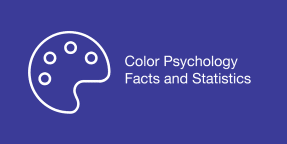Branding Statistics (What Are The Benefits Of Branding?)
We curated the most comprehensive branding statistics roundup to show you how beneficial and important branding is in shaping a business’s success.
Effective branding can leave a lasting impression on consumers, build trust, and differentiate businesses from their competitors.
If you don’t think strategically about branding and aren’t consistent with it (across all channels), you will be wasting a lot of money.
By exploring key insights, we illuminate the power of branding to drive customer engagement, increase brand loyalty, and raise long-term business growth.
Whether you’re an entrepreneur, marketer, or just curious about branding’s impact, this article provides valuable insights into the ever-evolving world of brand identity.
This post covers:
- What Are The Benefits Of Branding?
- Brand Loyalty Statistics
- Personal Branding Statistics
- Employer Branding Statistics
- B2B And B2C Branding Statistics
- Other Branding Statistics
Branding Statistics (Our Top Picks)
- An 80% brand recognition increase when using a signature color
- 10-20% revenue growth for those remaining brand consistency
- 77% of consumers purchase based on the brand name, not the product name
- 77% of marketing leaders name branding as the critical part of business growth
- 72% of consumers are likelier to purchase from brands that provide a personalized experience
- Strong employer brand can reduce cost per hire even up to 50%
- Companies with excellent employer brand see 50% more applications
- Less than 10% of B2B companies say their branding is consistent
What Are The Benefits Of Branding?
1. 46% of consumers pay more for brands they trust
One of the positives of great branding is establishing trustworthiness and solid consumer relationships. And nearly 50% of consumers say they would pay more for brands they trust, a 16% increase from 2021.
Source: Salsify
2. An 80% brand recognition increase when using a signature color
Research has shown that when a brand uses a signature color (and stays consistent with it), it could mean a whopping 80% increase in consumer brand recognition.
When representing your business with a unique color, more consumers will recognize you (in a mass of other brands) and potentially buy from you – because they know you.
Fun fact: Colors spark emotions, so strategically picking the right signature color(s) is wise.
Keep in mind, 78% of consumers remember the brand’s signature colors, while only 43% of them remember its name.
You might also be interested in these color psychology facts to learn more about the impact of colors.
Source: Reboot
3. 10-20% revenue growth for those remaining brand consistency
Nearly 70% of businesses say that their brand consistency has contributed from 10% to, in some cases, more than 20% of their revenue growth.
| Revenue increase | Share of respondents |
| 20% (or more) | 32% |
| 10-20% | 35% |
| 5-10% | 21% |
Maintaining your brand image across multiple channels, advertisements, online and offline, means you’re serious about what you do. Consumers see this and are more likely to purchase from your brand rather than those who lack brand consistency.
Source: Marq
4. 77% of consumers purchase based on the brand name, not the product name
Interestingly the name of the product isn’t as important to consumers as the brand name is. A report states that 77% of consumers make a purchase based on the brand name, not the product.
So when buying a new smartphone, Apple influences your purchasing decision more than iPhone? I’m the other way around.
Source: Cision
5. Over 80% of investors say name recognition is key factor guiding their investment decision
A brand name that is recognizable and easy to remember sparks the interest of 82% of investors. Investors say that the level of name recognition is one of their important investment decision-making factors.
Source: Cision
6. 77% of marketing leaders name branding as the critical part of business growth
Even though multiple factors contribute to the growth of a business, nearly 80% of marketing leaders say branding is vital. Solid branding can build trustworthiness, impacts buyers’ decisions, and more.
So before you decide it’s time to scale, ensure to review your branding (strategy) and reap even better results.
Source: Adience
7. 65% of business revenue comes from existing customers who know the brand
An average of 65% of business revenue comes from existing customers who are familiar (and loyal) to the brand. Because of this, it’s even more important to deliver excellent customer service and maintain brand consistency to ensure better customer retention.
Hey, it’s easier to make the existing customer keep buying from you than to acquire a new one.
Source: Hoovers
8. 55% of marketers say branding automation will increase the efficiency of their efforts
While only 1% of marketers say that branding cannot be automated, many see lots of benefits in using automation to improve the organization’s efforts.
55% say that automation will increase the efficiency of their efforts, while 50% find it will save them time so the team can focus on more important tasks the most beneficial.
Don’t forget to check our extensive marketing automation statistics to find how many marketers use it.
Source: Bynder
Brand Loyalty Statistics
9. Authenticity can improve consumer spending and loyalty (according to 88% of consumers)
Nearly 90% of consumers name authenticity as an “important” factor when deciding which brand(s) they like and support. (It’s a “very important” factor for 50%.)
Moreover, one excellent approach to improving authenticity is user-generated content – at least that’s what 59% of consumers say.
Source: Stackla
10. 72% of consumers are likelier to purchase from brands that provide a personalized experience
Consumers want to be felt like human beings, not like numbers. For this reason, 72% of consumers say they are more likely to do business with brands that provide them with a more personalized experience.
Intertwine a personal experience with your branding, and people will talk about you.
You may also be interested in reading our extensive customer experience statistics.
Source: Stackla
11. 74% of consumers say transparent communication builds trust
When a brand communicates with its customers honestly, transparently and thoughtfully, brand trust and loyalty increase. 74% of consumers report this way of communication is more important now than it was pre-pandemic.
Moreover, 62% of consumers feel emotionally connected to the brands they buy from. That’s why how a brand treats and interacts with consumers is vital, so it doesn’t harm the relationship.
Source: Salesforce #1
12. 94% of customers will purchase again due to receiving a great customer service
A single positive customer service experience makes 94% of customers likelier to purchase from the brand again.
Not just that, but 82% of customers say they recommend a brand and 80% say they forgive a brand for its mistake based on the excellent customer service they received.
Feel free to check our in-depth customer service statistics to understand how important customer service is.
Source: Salesforce #1
13. 81% of customers need to trust the brand to buy from it
81% of customers across (all) markets, ages and incomes say that they need to be able to trust the brand first before they will buy from it.
Furthermore, only 34% of customers trust most of the brands they buy from. Fun fact, those at the bottom income scale (29%) don’t trust brands as much as those at the top (38%).
Source: Edelman
14. 88% of consumers say it takes 3 or more purchases to build brand loyalty
Even if you have the best branding, the best products, the best customer experience and the best customer services, developing strong customer loyalty probably won’t happen after a single purchase – although all these factors contribute to loyalty tremendously.
In fact, nearly 90% of consumers say they will develop brand loyalty after three or more purchases.
Source: Intense Technologies
15. 27% of consumers name personalization as a strong attribute toward feeling loyal to a brand
Personalization has a strong impact on consumers, including their feeling of loyalty toward a brand. Another strong attribute is brand reputation (34%).
Source: Zendesk
16. 1 loyal customers = 10 one-time customers
The most valuable customers are the ones most loyal to the brand. And when a brand treats them with extra care, they can become micro brand ambassadors without them knowing they are one (recommending the brand, word of mouth marketing).
It is said that customer loyalty can be worth as much as ten times the worth of a single purchase.
Source: Curatti
Personal Branding Statistics
17. 93% of consumers trust personal recommendations the most
The majority of consumers trust personal recommendations (mainly coming from friends and family) the most. That’s 23% more than those trusting product or company websites. The least trust consumers have is in advertising (have you seen our advertising statistics?).
Source: Marketing Charts
18. Almost 50% of employers won’t interview a candidate if they can’t find them online
So all these branding statistics aren’t heavily business-oriented; here’s one for the employees looking for a job.
47% of employers say they won’t interview a candidate if they cannot find it anywhere online, one of the reasons being to gather information before the interview. (20% of employers expect candidates to have an online presence.)
Putting yourself out there strategically and developing a personal brand can be highly rewarding.
Source: CareerBuilder
19. Employees have 10x social connections than a company
When it comes to social following, on average, employees have 10x more connections and followers than a company has followers. (Do you want to know how many people use social media? Check our social media statistics!)
Interestingly, people are three times as likely to trust company information shared by an employee than if shared by a CEO.
LinkedIn also found that the click-through rate of content is 2x higher when shared by an employee compared to that shared by the company.
Source: LinkedIn #1
20. Salespeople who are regularly sharing on social media are 45% likelier to exceed their quota
When reaching the monthly quota, salespeople who frequently share and post content on social media are 45% more likely to achieve their goals than those who do not.
That’s why many companies encourage their sales staff to share content on social media – and that’s for a reason.
You’ll also enjoy these comprehensive sales statistics if you’re a salesperson.
Source: LinkedIn #1
21. Leads developed through employee social marketing convert better
Another reason companies encourage salespeople to use social marketing is that the leads they generate through it convert more frequently. Plus, socially-engaged companies are nearly 60% more likely to see an increase in sales leads.
Source: LinkedIn #1
22. Employees receive 8x more engagement than content shared by the company
Employees, especially those with a strong personal brand and social presence, are the best company advocates. Why? Because, on average, the content they share gets up to eight times more engagement than that the company shares.
Additionally, employee advocacy can increase brand reach by over 560%.
Source: Forbes
Employer Branding Statistics
23. Strong employer brand can reduce cost per hire even up to 50%
Just like clients and customers shouldn’t be treated as numbers, nor should employees. Thus, businesses with strong employer branding can reduce the cost per hire by as much as 50%.
Make your brand so likable that people will want to work for you. Remember, a negative reputation can cost a business up to 10% more per hire.
In addition to that, 50% of potential candidates say they would not work for a business with a bad reputation – even if they are offered a pay raise.
Source: Glassdoor
24. Over one-third of brands want employee word of mouth
Investing in your employees and “using” them to promote your brand and build a more solid brand reputation is something 36% of brands strive toward.
All the employees can become brand ambassadors, using powerful word of mouth marketing to build the brand.
Source: Meltwater
25. A nearly 30% reduction in turnover for companies actively investing in employer brand
All companies actively investing in employer brand can reduce their turnover by up to 28%. Isn’t this good proof that investing in a company’s employer brand is important?
Source: Glassdoor
26. Almost 80% of candidates wouldn’t apply to a 1-star-rated company
If the company has bad ratings (read 1 star) on online job-seeking platforms, only 21% of candidates would apply. Meanwhile, nearly 35% of candidates would apply to a 2-star-rated company.
Interestingly, women are 33% less like to apply to a 1-star-rated company than men.
Remember, over 90% of candidates do an online or offline company review first before applying for a job.
(Note that 86% of companies and employers doubt the fairness of online reviews.)
Source: Careerarc
27. 64% of consumers stopped buying from a brand that treats its employees poorly
If the information leaks that a brand’s employees are treated poorly, it can negatively influence consumers’ spending behavior. In fact, nearly 65% say they stopped purchasing from such a brand because they don’t support such treatment.
Source: Careerarc
28. Companies with excellent employer brand see 50% more applications
Hiring new talent becomes much easier for companies working on (continuously improving) their employer brand. It was found that such companies receive a whopping 50% more applications.
Hey, who doesn’t want to work for a brand with a strong online/offline reputation?
Source: LinkedIn #2
29. 4 common ROI metrics to measure employer brand
I’ve seen many online who ask how to measure the return on investment (ROI) when it comes to measuring employer brand. According to EBI’s global research, the four most common metrics are:
- Retention rate
- Quality of hire
- Cost of hire
- Number of applicants
Source: LinkedIn #2
30. Nearly 70% of leaders say professional social networks are important for spreading employer brand awareness
While all social media works great for spreading employer brand awareness, the most effective are professional social networks, like LinkedIn.
Companies on LinkedIn with a strong Talent Brand Index are growing 20% faster than those with a poor TBI.
Source: LinkedIn #2
B2B And B2C Branding Statistics
31. 90% of B2B customers use Google to do a business purchase research
Before a B2B customer decides to make a purchase, most of them first do Google research. And 71% of them say they start with a generic search.
What’s important to know is that 57% of B2B customers doing the research are already in the buying process, so they’re likelier to convert when landing on a website.
Source: Think With Google
32. B2B researchers do 12 searches before engaging with a business site
From more generic searches to more specific searches, the research journey for B2B customers usually takes around twelve searches before they land on a business site and engage.
Source: Think With Google
33. Less than 10% of B2B companies say their branding is consistent
Branding consistency is an essential element of every business’s success. Unfortunately, less than 10% of B2B (and some B2C) businesses are consistent with their branding.
Why is brand consistency important? Because those businesses that are consistent are three to four times likelier to benefit from better brand visibility (and potentially more growth and success).
Surprisingly, 90% of B2B and B2C are aware of the importance of brand consistency, but so few are actually (actively) doing it.
Source: Demand Metric Research Corporation
34. 71% of B2B/B2C companies name market confusion as the biggest negative impact of branding inconsistency
When companies aren’t consistent with their branding, the chance of creating confusion in the market increases significantly. 71% of respondents said this is the most negative impact of brand inconsistency.
Fun fact: Only 7% of study participants think brand presentation consistency is either “very unimportant” or “unimportant.”
Source: Demand Metric Research Corporation
35. 36% of B2B and 21% of DTC businesses want employee advocacy
To build a strong brand reputation, 36% of B2B and 21% of DTC businesses are working on encouraging employee advocacy. Turn your employees into business/brand “ambassadors” to spread the word out there and boost your reputation.
Another important stat worth mentioning is that employee voice is 3x more credible than CEO’s regarding talking about the company’s working conditions.
Source: Meltwater
Other Branding Statistics
36. Most valuable brands worldwide in 2023
- Amazon, $299.28 billion
- Apple, $297.51 billion
- Google, $281.38 billion
- Microsoft, $191.57 billion
- Walmart, $113.78 billion
- Samsung Group, $99.66 billion
- ICBC, $69.55 billion
- Verizon, $67.44 billion
- Tesla, $66.21 billion
- TikTok/Douyin, $65.67 billion
Source: Statista #1
37. Fastest growing brands worldwide in 2023
| Brand | Growth rate |
| BYD | 57% |
| ConocoPhillips | 56% |
| Maersk | 53% |
| 49% | |
| Dior | 46% |
| Tesla | 44% |
| ADP | 44% |
| United | 42% |
| 42% | |
| Equinor | 40% |
Source: Statista #2
38. It takes 0.05 seconds to form a first impression about a website
Instead of talking fractions of a second, we could easily say that a person makes a first impression about a website immediately. Thus, it’s essential that you don’t take your branding lightly – ensure the first impression is a positive one.
One of the most important elements of forming the first impression is color. Yup, we sure are visual creatures. Check what’s the best color for a website through these website color statistics and gain inspiration by reviewing the best colors for websites (various color combinations explained).
We also curated the most extensive list of must-know website statistics (discover how many websites are there).
Source: 8 Ways
39. 77% of consumers buy from brands that share the same values as they are
When building a brand that resonates with your target audience, it’s first important that you know your consumers.
After that, it’s a lot easier to be on the same level, which is crucial for 77% of consumers who say they buy from brands that share the same values as they are.
Source: Havas Group
40. Nearly 80% of brands could disappear and no one would care
Yikes! A whopping 77% of brands could disappear tomorrow and no one would care. What’s even sadder is that the percentage is slowly increasing.
Create epic branding and a strong online and offline reputation so people will remember you. Remember, there’s always room for improvement.
Source: Havas Group
41. 60% of consumers have taken action based on a brand’s actions
60% of consumers have taken some form of positive or negative action based on the brand’s actions.
For instance, a brand’s positive actions impact nearly 35% of consumers talking about the brand to their friends, family members and coworkers because of it. Conversely, 30% of consumers stopped buying from a brand because of its negative actions.
Source: Weber Shandwick, KRC Research
42. 40% of Fortune 500 companies use the color blue in their logo
If you’re unsure about what color(s) to put in your logo, you might go with the color blue; at least that’s what 40% of the Fortune 500 companies do. The second most popular color is black and the third is red.
Source: Website Planet
43. 92% of marketers say personalization impacts brand building
Personalization has a strong relationship with brand building. Over 90% of marketers say it “majorly” or “moderately” improves brand building, while 84% of them say it improves customer acquisition.
Source: Salesforce #2
44. 64% of consumers used a branded hashtag on social media
User-generated content is extremely valuable for brands. Luckily, 64% of consumers said they used a branded hashtag on social media.
Furthermore, 64% of consumers also said they’re more likely to share brands’ content and products if they re-share customer-created content.
Source: TINT
45. 80% of B2C marketers say they use content marketing to create brand awareness
One of the top goals for B2C marketers is to use a content marketing strategy to create brand awareness. Moreover, writing short articles and posts and creating videos are the two main content types B2C use in their content marketing approach.
Check our business blogging statistics for more insights on blogging and content marketing.
Source: Content Marketing Institute
Conclusion
The branding statistics presented in this article reinforce the undeniable influence of effective branding on business success.
From increased customer loyalty and trust to personal and employer branding, the impact of a well-crafted brand strategy cannot be underestimated.
As consumers become more brand-conscious, investing in brand development and maintaining a consistent brand image is crucial for all businesses.
Stay attuned and up-to-date with consumer preferences so your organization can set itself up for long-term success.
Embrace the power of branding and unleash its potential to drive your business forward.








This Post Has 0 Comments